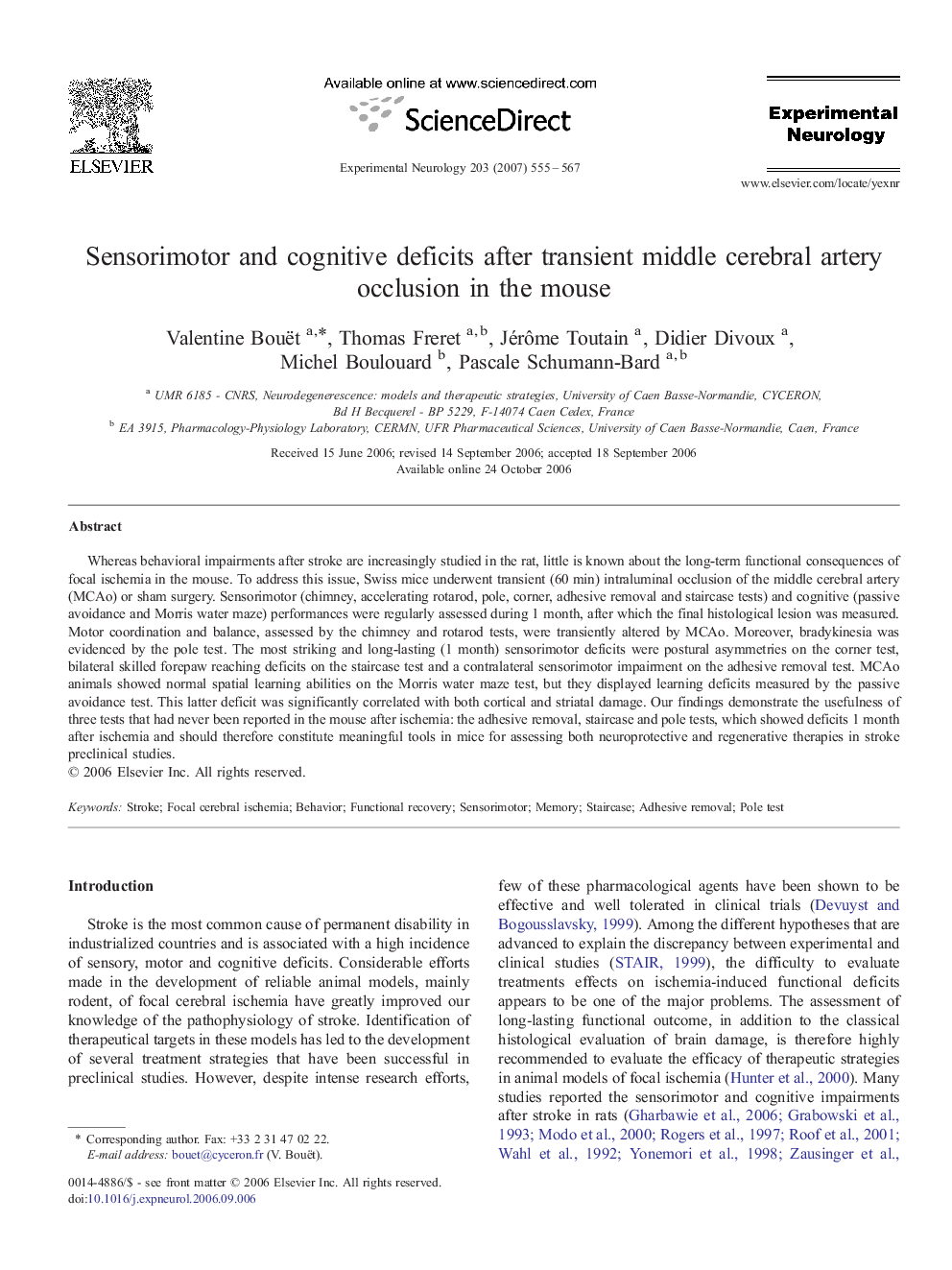| Article ID | Journal | Published Year | Pages | File Type |
|---|---|---|---|---|
| 3057311 | Experimental Neurology | 2007 | 13 Pages |
Whereas behavioral impairments after stroke are increasingly studied in the rat, little is known about the long-term functional consequences of focal ischemia in the mouse. To address this issue, Swiss mice underwent transient (60 min) intraluminal occlusion of the middle cerebral artery (MCAo) or sham surgery. Sensorimotor (chimney, accelerating rotarod, pole, corner, adhesive removal and staircase tests) and cognitive (passive avoidance and Morris water maze) performances were regularly assessed during 1 month, after which the final histological lesion was measured. Motor coordination and balance, assessed by the chimney and rotarod tests, were transiently altered by MCAo. Moreover, bradykinesia was evidenced by the pole test. The most striking and long-lasting (1 month) sensorimotor deficits were postural asymmetries on the corner test, bilateral skilled forepaw reaching deficits on the staircase test and a contralateral sensorimotor impairment on the adhesive removal test. MCAo animals showed normal spatial learning abilities on the Morris water maze test, but they displayed learning deficits measured by the passive avoidance test. This latter deficit was significantly correlated with both cortical and striatal damage. Our findings demonstrate the usefulness of three tests that had never been reported in the mouse after ischemia: the adhesive removal, staircase and pole tests, which showed deficits 1 month after ischemia and should therefore constitute meaningful tools in mice for assessing both neuroprotective and regenerative therapies in stroke preclinical studies.
